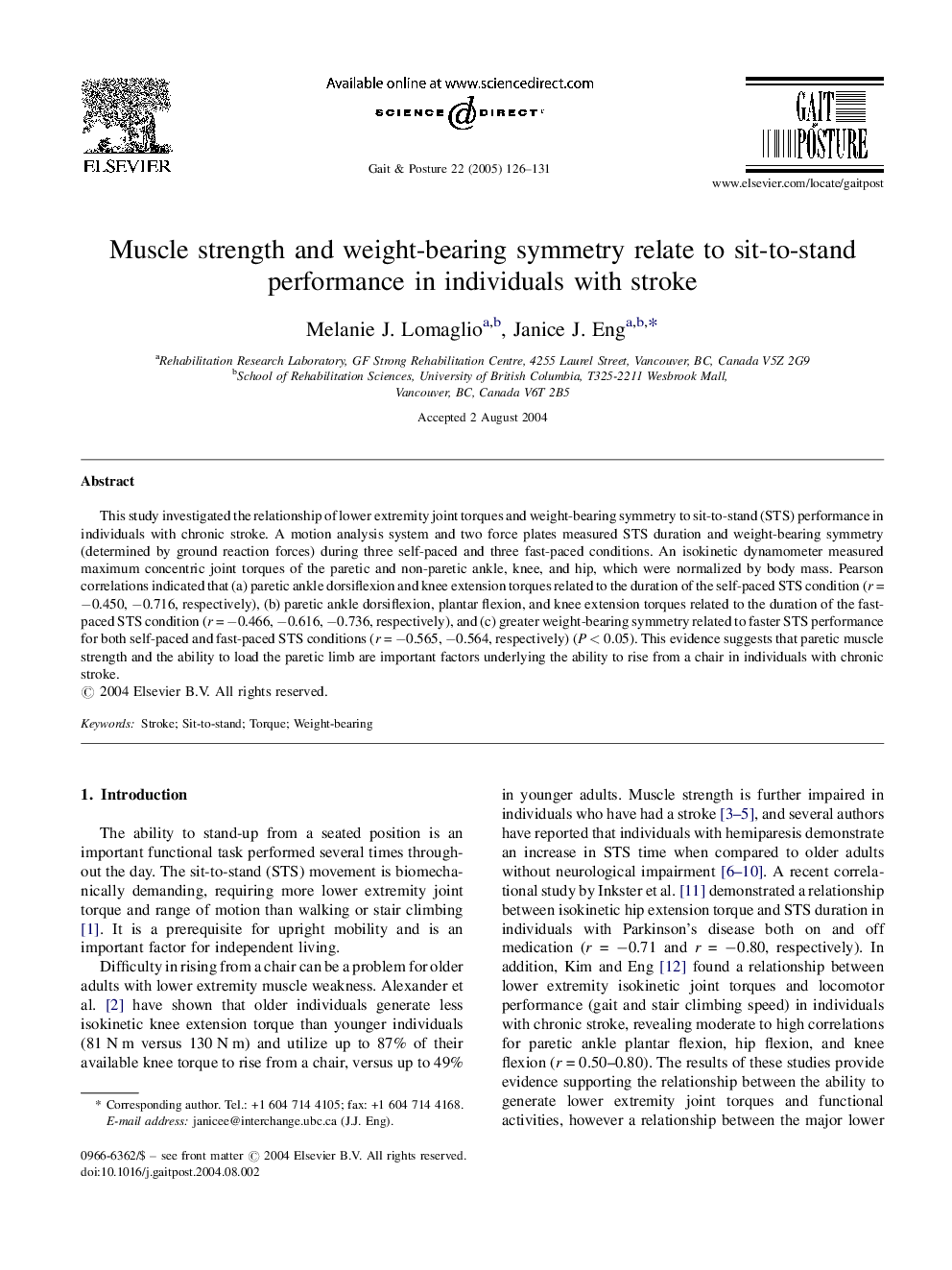| کد مقاله | کد نشریه | سال انتشار | مقاله انگلیسی | نسخه تمام متن |
|---|---|---|---|---|
| 9352612 | 1265717 | 2005 | 6 صفحه PDF | دانلود رایگان |
عنوان انگلیسی مقاله ISI
Muscle strength and weight-bearing symmetry relate to sit-to-stand performance in individuals with stroke
دانلود مقاله + سفارش ترجمه
دانلود مقاله ISI انگلیسی
رایگان برای ایرانیان
کلمات کلیدی
موضوعات مرتبط
علوم پزشکی و سلامت
پزشکی و دندانپزشکی
ارتوپدی، پزشکی ورزشی و توانبخشی
پیش نمایش صفحه اول مقاله

چکیده انگلیسی
This study investigated the relationship of lower extremity joint torques and weight-bearing symmetry to sit-to-stand (STS) performance in individuals with chronic stroke. A motion analysis system and two force plates measured STS duration and weight-bearing symmetry (determined by ground reaction forces) during three self-paced and three fast-paced conditions. An isokinetic dynamometer measured maximum concentric joint torques of the paretic and non-paretic ankle, knee, and hip, which were normalized by body mass. Pearson correlations indicated that (a) paretic ankle dorsiflexion and knee extension torques related to the duration of the self-paced STS condition (r = â0.450, â0.716, respectively), (b) paretic ankle dorsiflexion, plantar flexion, and knee extension torques related to the duration of the fast-paced STS condition (r = â0.466, â0.616, â0.736, respectively), and (c) greater weight-bearing symmetry related to faster STS performance for both self-paced and fast-paced STS conditions (r = â0.565, â0.564, respectively) (P < 0.05). This evidence suggests that paretic muscle strength and the ability to load the paretic limb are important factors underlying the ability to rise from a chair in individuals with chronic stroke.
ناشر
Database: Elsevier - ScienceDirect (ساینس دایرکت)
Journal: Gait & Posture - Volume 22, Issue 2, October 2005, Pages 126-131
Journal: Gait & Posture - Volume 22, Issue 2, October 2005, Pages 126-131
نویسندگان
Melanie J. Lomaglio, Janice J. Eng,